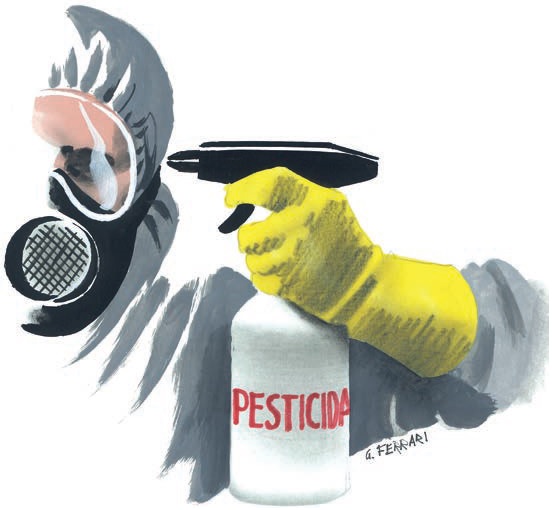Pesticides
Publish date 28-06-2021
When holes are made in an ecosystem's power grid, it is in danger.

In Europe today 2.8% of workers are employed in agriculture. We have been trying for some time to evolve cultivation practices towards an agriculture attentive to the quality of the products, to the protection standards of the farms, to the respect of the landscape, of the ecosystems, of the wild life, of the efficient consumption and sustainable energy (including fertilizers and pesticides). The goal set for 2030 by the European Community is courageous and far-sighted: halving the use of pesticides, pesticides, herbicides, reducing fertilizers by 20% and antibiotics for animals on farms by 50%.
«Various researches have shown that in a wheat field there should be up to 1,400 arthropods per square meter (ants, bees, arachnids, grasshoppers, cryosomelids, carabids, springtails, cicadas, flies…). The fields are home to a great biodiversity and few of these insects are harmful, indeed they carry out a biological control of parasites "(The invisible enemy, Johann G. Zaller, ed. Abo¬ca). Side effects are being studied with significant reports of damage to earthworms (fundamental for soil fertility), mycorrhizae (in symbiosis with plants and essential for them), bees (neonicotinoids are toxic for them, even if I am only one of the many responsible for the current difficulties in the health of bees) ... In recent decades, many species of birds and bats which are an important component of agriculture have decreased for various reasons: herbicides which reduce the basis of their diet (seeds and insects), changes in cultivation processes and harvest times, education of natural or semi-natural landscape elements. When holes break out into an ecosystem's power grid, it is in danger.
One consideration is central: in order for the rules to be respected both in conventional and organic agriculture (growing) it is necessary that the entire production chain, from the field to the shelf, is controlled by independent organisms. you. Among the possible alternative practices to the current excess of pesticides we mention, for example, a better rotation of crops, a better management of the soil, water, fertilization, the time of sowing, the use of other insects antagonists of those nuts. ; research, development and selection of disease resistant species, new pesticide products; lightening of the aesthetic claims towards fruit and vegetables, protection of the land and their organic substances; use of compost, less food waste. Each piece of the puzzle can compose the new picture. However, a rethinking process has begun which must involve more not only pesticide producers and user farmers but above all consumers of final products.
Carlo De Giacomi
NP Marzo 2021







